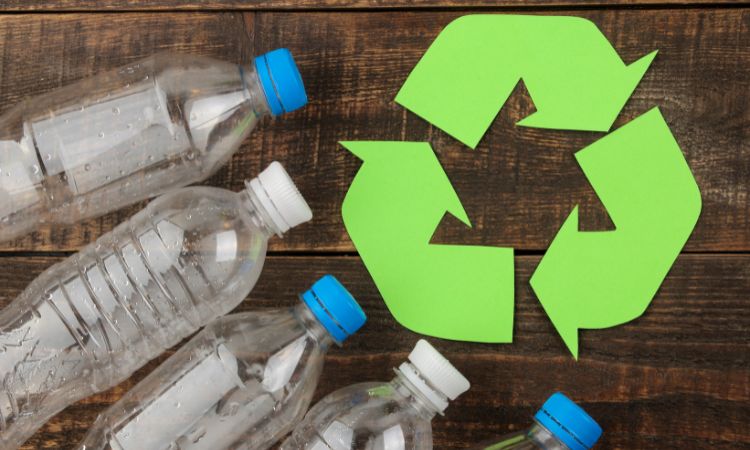The ever-growing demand for consumer goods creates a mountain of packaging waste. This plastic pollution poses a significant threat to our environment, highlighting the urgent need for sustainable solutions. The good news? The North American recycled plastics market size is expected to grow at a CAGR of 5.2% during the period 2024-2032, indicating a significant shift towards a more responsible packaging future. Recycled plastics are playing a crucial role in this transformation, offering a viable alternative to virgin plastics and creating a circular economy for plastic use.
The Packaging Landscape in North America: A Need for Change
The North American packaging industry relies heavily on traditional materials like plastic, paper, and metal. While these materials offer functionality and protection for products, their environmental impact is undeniable. Plastic pollution, in particular, is a major concern. Landfills are overflowing, and plastic debris is contaminating our oceans and harming wildlife. Furthermore, the production of virgin plastics requires significant amounts of fossil fuels and energy, contributing to greenhouse gas emissions.
Recycled Plastics to the Rescue: A Sustainable Solution
Recycled plastics offer a compelling solution to these environmental challenges. Here’s how:
- Reduced Carbon Footprint: Manufacturing recycled plastics uses significantly less energy compared to virgin plastics. This translates to a lower carbon footprint, mitigating climate change impacts.
- Energy Savings: Recycling plastic reduces the reliance on extracting and processing new raw materials, leading to substantial energy savings.
- Waste Reduction: By diverting plastic waste from landfills and turning it into valuable resources, recycled plastics promote a circular economy and minimize waste generation.
The Diverse World of Recycled Plastics in Packaging
Not all plastics are created equal, and the same is true for recycled plastics. Different types of recycled plastics have varying properties and applications:
- PET (Polyethylene Terephthalate): Widely recycled from water bottles and food containers, PET finds new life in packaging for beverages, food trays, and clothing.
- HDPE (High-Density Polyethylene): Recycled HDPE, commonly sourced from milk jugs and detergent bottles, is used for creating rigid containers, pipes, and lumber alternatives.
- LDPE (Low-Density Polyethylene): Recycled LDPE, often derived from grocery bags and films, finds application in flexible packaging solutions, trash can liners, and shipping envelopes.
Innovation Drives Sustainable Packaging Solutions
The North American recycled plastics market is witnessing exciting advancements in packaging solutions:
- Biodegradable Plastics: These innovative plastics are derived from renewable resources and can decompose naturally under specific conditions.
- Compostable Plastics: Made from plant-based materials, compostable plastics break down into organic matter in composting facilities.
- Barrier Coatings: These coatings improve the functionality of recycled plastics by enhancing their ability to block moisture, oxygen, and other elements that can degrade food or non-food products.
Success Stories: Putting Sustainability into Practice
Several companies in North America are demonstrating the power of sustainable packaging with recycled plastics:
- Unilever: The multinational consumer goods giant has pledged to use 100% recycled plastic packaging by 2025. They are actively replacing traditional plastics with recycled alternatives across their product lines.
- Coca-Cola: The beverage giant is investing in technologies to enhance the quality and availability of food-grade recycled PET. They are also using recycled plastic content in their iconic bottles.
Challenges and Considerations
While the outlook for recycled plastics is promising, there are challenges to address:
- Quality Consistency: Maintaining consistent quality in recycled plastics can be a hurdle. Advancements in sorting and processing technologies are crucial to address this concern.
- Cost: In some cases, recycled plastics might be slightly more expensive than virgin plastics. However, as the market matures and economies of scale come into play, this cost gap is expected to narrow.
Regulation: Paving the Way for Progress
Government regulations play a crucial role in promoting the use of recycled plastics in packaging. Several North American initiatives are creating a supportive framework:
- Extended Producer Responsibility (EPR) Programs: These programs hold manufacturers responsible for the end-of-life management of their products, incentivizing them to use recyclable materials.
- Mandatory Recycling Laws: Legislation promoting mandatory recycling programs in municipalities increases the availability of high-quality recycled plastic feedstock.
Consumer Power: The Demand for Sustainable Choices
Consumers are becoming increasingly conscious of the environmental impact of packaging. This growing awareness leads to a high demand for sustainable packaging solutions. Companies that embrace recycled plastics cater to this demand and gain a competitive edge.
The Future is Green: A Sustainable Packaging Landscape
The future of packaging in North America is undoubtedly green. With the North American recycled plastics market poised for significant growth, we can expect a shift towards a landscape dominated by sustainable packaging solutions. Here’s a glimpse into what the future holds:
- Technological Advancements: Innovations in sorting, processing, and recycling technologies will enhance the quality and efficiency of recycled plastic production. This will lead to a wider range of applications and increased cost-competitiveness with virgin plastics.
- Bioplastics Gain Traction: The development of bioplastics made from renewable resources will offer even more sustainable alternatives. Bioplastics research is expected to overcome current limitations like scalability and functionality, making them a viable option for a broader range of packaging applications.
- Transparency and Collaboration: Greater transparency throughout the supply chain will be crucial. Consumers will demand information about the recycled content in packaging, and collaboration between brands, recyclers, and policymakers will be essential to ensure responsible sourcing and efficient recycling practices.
- Consumer Education: Educating consumers about the benefits of recycled plastic packaging will further drive demand and encourage responsible waste disposal habits.

